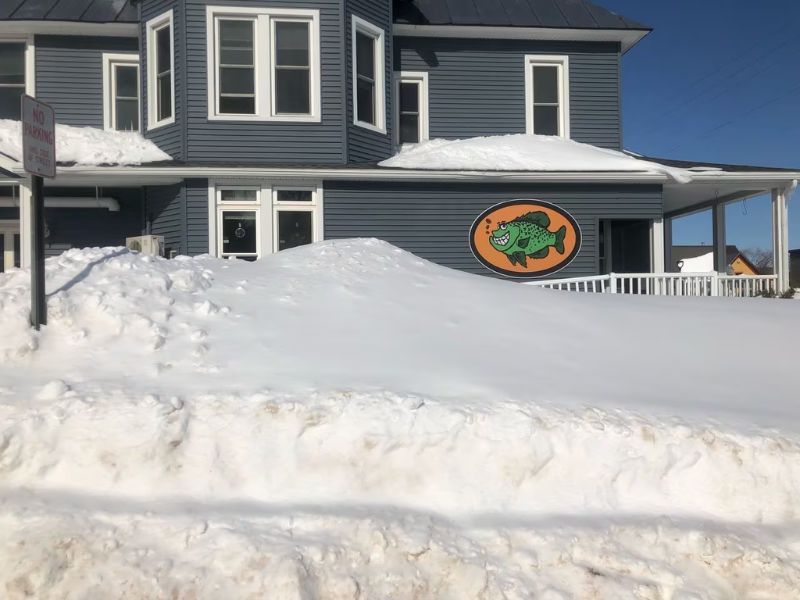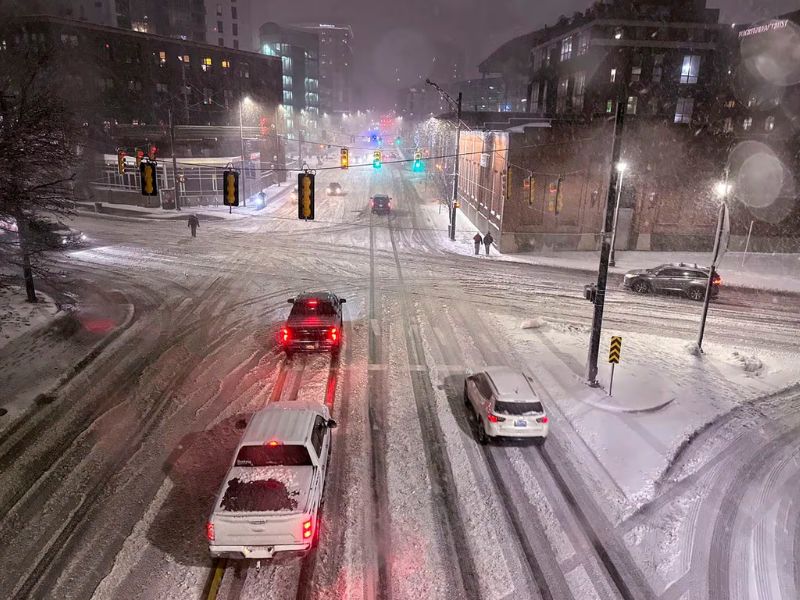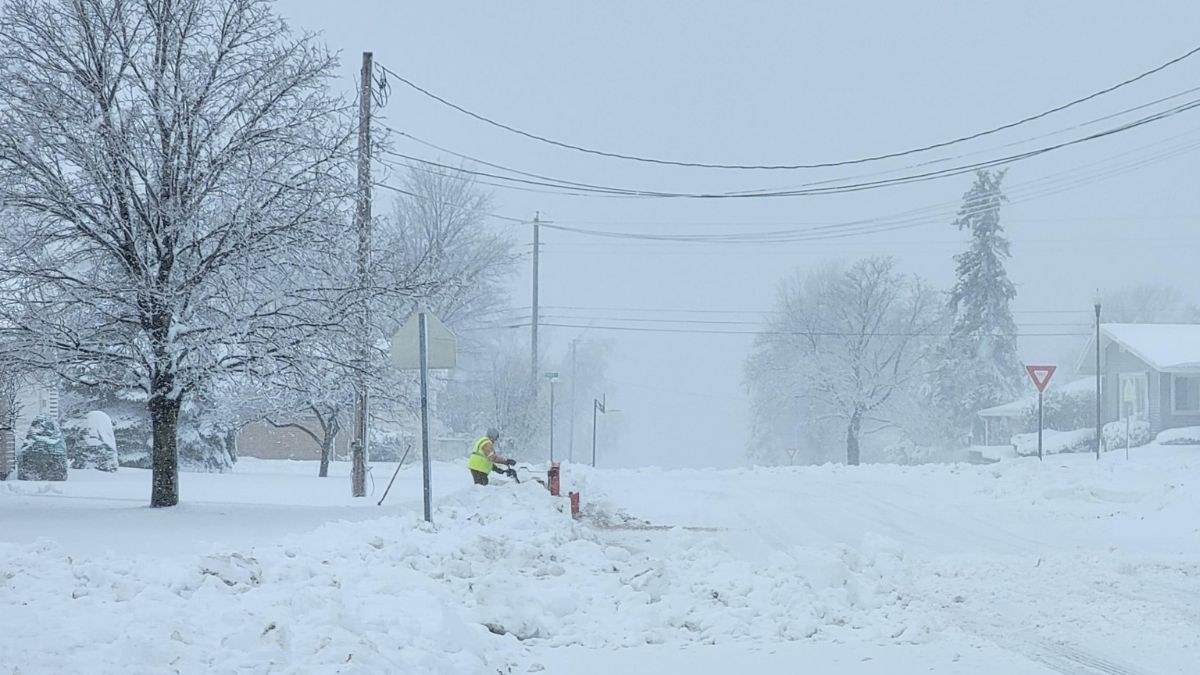Yes, it does snow in Michigan. Michigan experiences significant snowfall during the winter months, particularly in the northern and western regions of the state. The Upper Peninsula (UP) and certain areas in the Lower Peninsula, especially those near the Great Lakes, receive the most snow due to their proximity to the lake-effect snow phenomenon.
Overall, the state of Michigan embraces its snowy winters and offers a wide range of winter activities and sports for residents and visitors to enjoy.
Michigan, a state located in the Great Lakes region of the United States, is known for its diverse landscapes and unpredictable weather. One of the most common questions asked about Michigan’s climate is whether it experiences snowfall.
In this article, we will delve into the snowfall patterns in Michigan, exploring its geographical diversity, average snowfall, and the impact of Lake-effect snow, which plays a significant role in shaping the state’s winters.
- Recommended:
Location Overview of Michigan
Michigan, located in the Great Lakes region of the United States, is a state known for its diverse landscapes, vibrant culture, and rich history. Situated in the Midwest, Michigan is surrounded by four of the five Great Lakes: Superior, Michigan, Huron, and Erie.
It comprises two peninsulas – the Lower Peninsula and the Upper Peninsula – which are connected by the Mackinac Bridge, one of the longest suspension bridges in the world. Michigan offers a wealth of cultural and recreational attractions for residents and visitors to explore. Some of the highlights include:
- Great Lakes
With its extensive shoreline along four of the five Great Lakes, Michigan provides ample opportunities for water-based activities, such as boating, fishing, and swimming.
- National Parks
The state is home to several national parks, including Isle Royale National Park in Lake Superior and Sleeping Bear Dunes National Lakeshore along Lake Michigan.
- Urban Centers
Detroit, Ann Arbor, Grand Rapids, and Lansing offer a mix of cultural events, museums, theaters, and vibrant dining scenes.
A popular tourist destination, Mackinac Island is known for its horse-drawn carriages, historic architecture, and stunning views of the Mackinac Bridge.
- Winter Sports
Michigan’s snowy winters provide opportunities for skiing, snowboarding, snowmobiling, and other winter activities.
- Cherry Festival
Traverse City hosts the National Cherry Festival, celebrating the state’s cherry orchards and featuring various events and activities.
Michigan’s unique geographical location, diverse landscapes, and rich cultural offerings make it an appealing destination for residents and visitors alike. From its bustling urban centers to its tranquil natural wonders, the state offers a balanced blend of modernity and nature, making it a captivating place to live or explore.
Whether enjoying the Great Lakes, embracing the snowy winters, or delving into its rich history, Michigan has something to offer everyone.
Geography and Climate of Michigan
The climate in Michigan varies throughout the state due to its proximity to the Great Lakes. The presence of the lakes significantly influences the weather, leading to milder temperatures and more snowfall in the coastal regions, particularly in the western and northern parts.
Summers are generally warm and humid, while winters can be cold with significant snowfall, especially in the northern regions influenced by lake-effect snow.
Michigan’s unique geographical location contributes to its varied climate and diverse landscapes. The state is bordered by four of the five Great Lakes: Lake Superior, Lake Michigan, Lake Huron, and Lake Erie.
The Lower Peninsula is characterized by fertile plains, rolling hills, and several large cities, including Detroit, the state’s largest city and a prominent automotive hub. The Upper Peninsula, on the other hand, boasts rugged terrain, pristine forests, and scenic shoreline along Lake Superior.
Historical Snowfall Record of Michigan
Here are some notable dates of past snow events in Michigan:

- The Great Blizzard of 1978
Occurred from January 26 to 27, 1978, and was one of the most severe winter storms in Michigan’s history. It brought heavy snowfall, high winds, and extremely low temperatures, causing widespread disruptions and transportation challenges.
- April 6-7, 1982 Snowstorm
A significant late-season snowstorm that struck Michigan in early April 1982, bringing heavy snow to many parts of the state and causing disruptions to spring activities.
- The November 2014 Snowstorm
In early November 2014, Michigan experienced a snowstorm that brought significant snowfall to several areas, particularly in the western and northern regions, catching many residents off guard with its early arrival.
- The December 2016 Snowstorm
In mid-December 2016, a winter storm impacted Michigan, causing widespread snowfall and hazardous travel conditions.
- Polar Vortex 2019
In late January 2019, a polar vortex event brought bitterly cold temperatures and significant snowfall to Michigan, leading to school closures and dangerous wind chills.
Winter Season & Snowfall Pattern of Michigan
Michigan experiences a considerable amount of snowfall on an annual basis, especially in the northern and western regions. The UP typically receives more snow compared to the Lower Peninsula. Cities like Marquette, Houghton, and Sault Ste. Marie often witness significant snow accumulations during the winter months.
In the Lower Peninsula, cities in the northern part, such as Traverse City and Petoskey, also see substantial snowfall due to their proximity to the Great Lakes. However, as one moves southward towards cities like Detroit and Lansing, the snowfall amounts decrease, but snow is still common during winter.
One of the primary reasons for Michigan’s abundant snowfall, especially in the coastal regions, is the phenomenon known as lake-effect snow. As cold air passes over the relatively warmer waters of the Great Lakes, it absorbs moisture, which is then released as heavy snowfall as the air rises over the cooler landmass.
Lake-effect snow is highly localized, and its impact can vary greatly from one location to another. This results in areas near the shores of the Great Lakes experiencing significantly more snow than areas farther inland.
Certain areas in Michigan, particularly in the UP and parts of the Lower Peninsula, are known as “Snowbelt” regions. These areas are famous for their intense snowfall and challenging winter conditions. While picturesque and beloved by winter sports enthusiasts, the Snowbelt regions can also pose transportation and infrastructure challenges during the winter months.
Locations to Enjoy Snow in Michigan
Michigan is a winter wonderland with plenty of locations offering opportunities to embrace the snowy season. Whether you’re a winter sports enthusiast or simply want to experience the magic of a snowy landscape, here are some fantastic places to enjoy snow in Michigan:

- Upper Peninsula (UP)
The entire Upper Peninsula of Michigan is a snowy paradise during the winter months. With heavy snowfall and scenic landscapes, the UP offers excellent skiing, and snowshoeing opportunities. Marquette, Houghton, and Munising are popular destinations for winter sports and breathtaking winter scenery.
- Traverse City
Situated in Northern Michigan, Traverse City is famous for its cherry orchards and its winter charm. The city and its surroundings boast numerous ski resorts, including Crystal Mountain and Shanty Creek Resorts, providing excellent downhill skiing and snowboarding experiences.
- Sleeping Bear Dunes National Lakeshore
Located near Traverse City, Sleeping Bear Dunes offers a unique winter experience with snow-covered sand dunes and stunning views of Lake Michigan. It’s a great place for winter hiking and photography.
- Mackinac Island
While Mackinac Island is well-known as a summer destination, it transforms into a peaceful winter retreat during the colder months. Snow-covered streets, horse-drawn sleigh rides, and beautiful winter landscapes make it a picturesque location for a winter escape.
- Gaylord
Gaylord is a winter hotspot in Michigan, often called the “Alpine Village.” The area receives considerable snow, making it perfect for winter sports like skiing, snowboarding, and snowmobiling. Treetops Resort and Otsego Resort are popular ski destinations in Gaylord.
- Boyne Mountain and Boyne Highlands
Located near Petoskey, these two ski resorts offer a wide range of winter activities and are known for their excellent skiing and snowboarding conditions. They also provide opportunities for snowshoeing, tubing, and winter zip-lining.
- Porcupine Mountains Wilderness State Park
This park becomes a winter wonderland with ample snowfall in the western Upper Peninsula. Visitors can enjoy cross-country skiing, snowshoeing, and snowmobiling while taking in the beauty of frozen waterfalls and snow-covered forests.
- Ann Arbor
Ann Arbor, home to the University of Michigan, becomes a picturesque winter city with the first snowfall. The Nichols Arboretum and Matthaei Botanical Gardens are delightful places to explore during winter.
- Grand Rapids
Grand Rapids offers various winter activities, including ice skating at Rosa Parks Circle and the opportunity to experience the holiday lights and decorations throughout the city.
- Tahquamenon Falls State Park
Located in the eastern Upper Peninsula, this state park features stunning frozen waterfalls during winter. It is an ideal spot for winter hiking and photography.
Whether you are a seasoned winter sports enthusiast or simply looking to revel in the snowy beauty of Michigan, these locations offer unforgettable experiences during the winter season.
Factors Influencing Snowfall in Michigan
Several key factors influence the amount of snowfall in Michigan. The state’s geographical location, with its proximity to the Great Lakes, plays a significant role. The presence of the Great Lakes leads to lake-effect snow, where cold air passing over the relatively warmer waters absorbs moisture.
As a result, coastal areas, particularly in the western and northern regions, receive more snow than inland areas. Additionally, the state’s two peninsulas, the Lower Peninsula and the Upper Peninsula, experience varying snowfall patterns due to their different terrains and distances from the Great Lakes.
Overall, Michigan’s snowfall is highly influenced by its proximity to the Great Lakes and the geographical diversity within the state.
Conclusion
Michigan is indeed a snowy state, particularly in its northern and western regions. The geographical diversity and the influence of the Great Lakes result in varying snowfall patterns across the state.
From lake-effect snow to the Snowbelt regions, winter in Michigan offers both challenges and opportunities for residents and visitors to embrace the joys of the season. Whether it is skiing down the slopes or cozying up by the fireplace, Michiganders have learned to appreciate and make the most of their winter wonderland.
